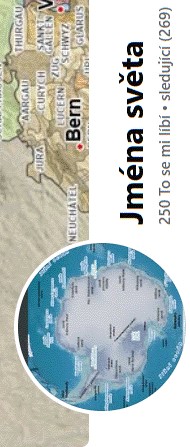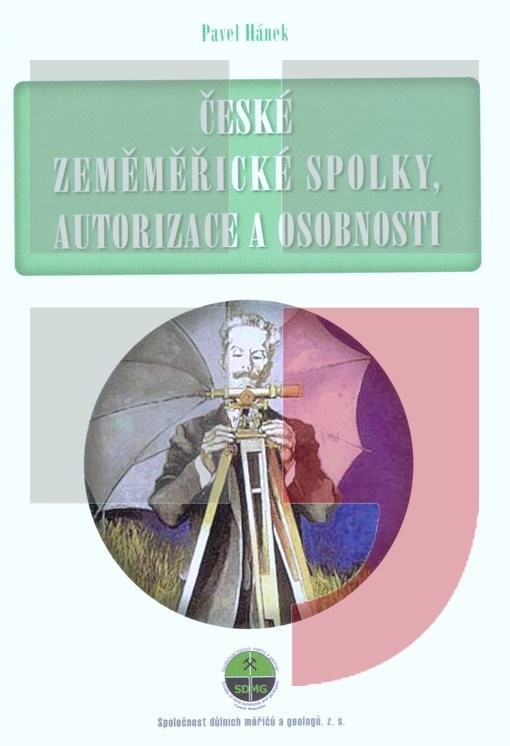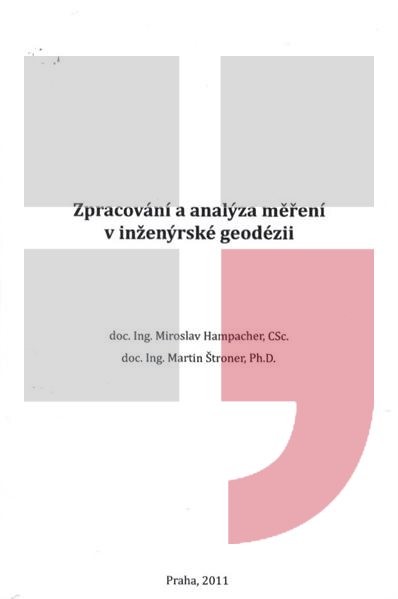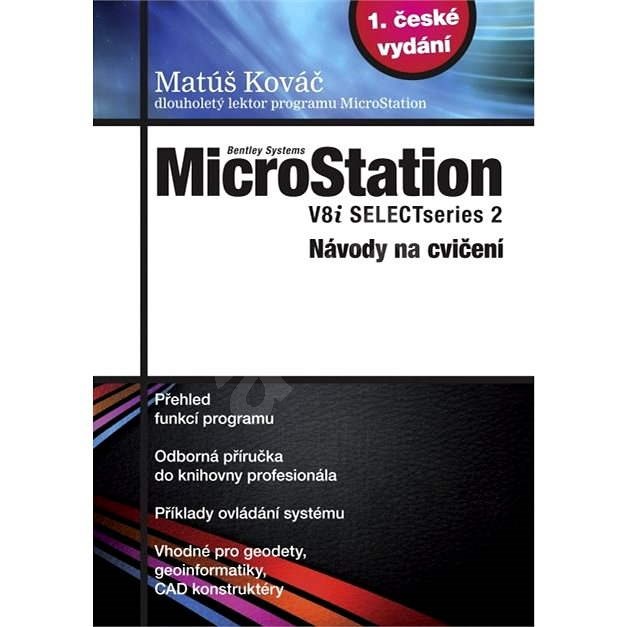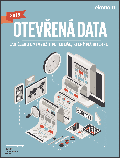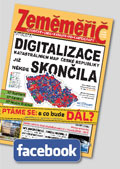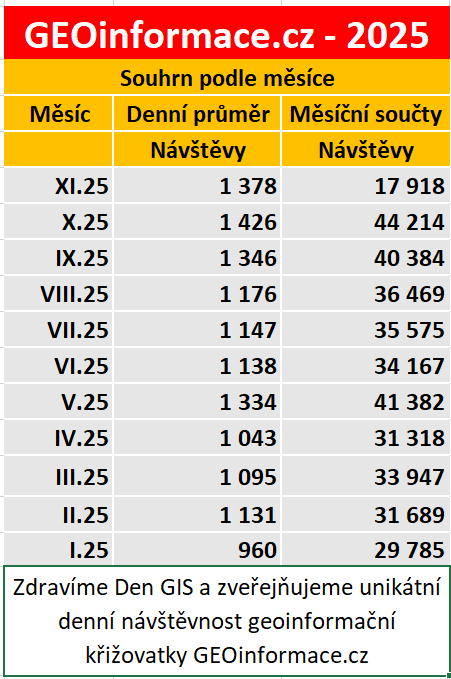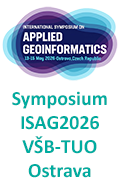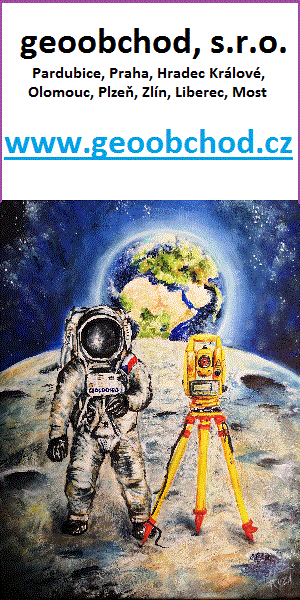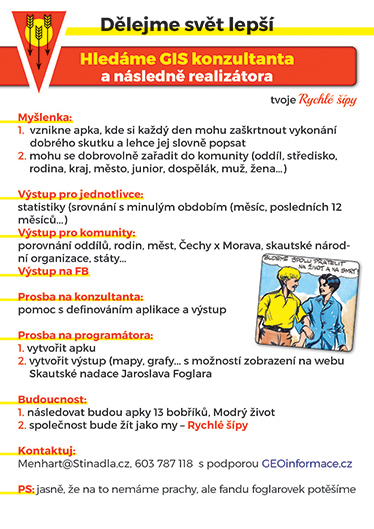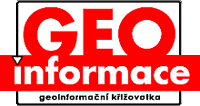zprávy
zdroje zpráv:WSDP - Dokumentace k nové verzi 2.9
3.5.2021 15:14 ČÚZK /Aplikace-DP-do-KN/Aplikace-DP-do-KN/Archiv-DP/319598WSDP - Dokumentace k nové verzi 2.9
3.5.2021 15:14 Dálkový přístup k údajům KN ČR Vážení uživatelé Webových služeb dálkového přístupu,upozorňujeme, že došlo k aktualizaci dokumentace pro Webové služby Dálkového přístupu (WSDP), byla vystavena dokumentace verze v2.9, kterou najdete na http://www.cuzk.cz/Katastr-nemovitosti/Poskytovani-udaju-z-KN/Dalkovy-pristup/Webove-sluzby-dalkoveho-pristupu.aspx.
Hlavní změnou je doplnění nové sestavy obsahující přehled vlastnictví OS se seznamem nemovitostí a nová operace stavWS, která vrací stav jednotlivých služeb WSDP.
Webová služba ctiOS zůstává zachována ve verzi v2.8 a její popis byl vyčleněn do samostatného dokumentu a samostatně bude dále i verzována.
Termín předpokládané instalace webových služeb verze 2.9 je 14.5.2021.
Od 14.5.2021 budou provozované obě verze WS v2.8 a v2.9, dále je připravováno i prostředí WSDP na zkoušku, informace o zprovoznění prostředí na zkoušku bude vystavena samostatnou zprávou.
WSDP - Dokumentace k nové verzi 2.9
3.5.2021 15:14 ČÚZK - předpisy a opatření Vážení uživatelé Webových služeb dálkového přístupu,upozorňujeme, že došlo k aktualizaci dokumentace pro Webové služby Dálkového přístupu (WSDP), byla vystavena dokumentace verze v2.9, kterou najdete na http://www.cuzk.cz/Katastr-nemovitosti/Poskytovani-udaju-z-KN/Dalkovy-pristup/Webove-sluzby-dalkoveho-pristupu.aspx.
Hlavní změnou je doplnění nové sestavy obsahující přehled vlastnictví OS se seznamem nemovitostí a nová operace stavWS, která vrací stav jednotlivých služeb WSDP.
Webová služba ctiOS zůstává zachována ve verzi v2.8 a její popis byl vyčleněn do samostatného dokumentu a samostatně bude dále i verzována.
Termín předpokládané instalace webových služeb verze 2.9 je 14.5.2021.
Od 14.5.2021 budou provozované obě verze WS v2.8 a v2.9, dále je připravováno i prostředí WSDP na zkoušku, informace o zprovoznění prostředí na zkoušku bude vystavena samostatnou zprávou.
Rada/odborný rada v oddělení právních vztahů k nemovitostem na Katastrálním pracovišti Znojmo
3.5.2021 10:51 ČÚZK - předpisy a opatření Katastrální úřad pro Jihomoravský kraj Katastrální pracoviště Znojmovypisuje výběrové řízení na místo
Rada/odborný rada v oddělení právních vztahů k nemovitostem na Katastrálním pracovišti Znojmo
Rada/odborný rada v oddělení právních vztahů k nemovitostem na Katastrálním pracovišti Znojmo
3.5.2021 10:51 ČÚZK /Urady/Katastralni-urady/Katastralni-urady/Katastralni-urad-pro-Jihomoravsky-kraj/Uredni-deska/Oznameni-a-jina-uredni-sdeleni/Volna-mista/DMS/Rada-odborny-rada-v-oddeleni-pravnich-vztahu-k-nemRada/odborný rada v oddělení právních vztahů k nemovitostem na Katastrálním pracovišti Znojmo
3.5.2021 10:51 ČÚZK - volná místa Katastrální úřad pro Jihomoravský kraj Katastrální pracoviště Znojmo vypisuje výběrové řízení na místo Rada/odborný rada v oddělení právních vztahů k nemovitostem na Katastrálním pracovišti ZnojmoOdborný referent v oddělení dokumentace KN na Katastrálním pracovišti Brno - venkov
3.5.2021 10:42 ČÚZK - předpisy a opatření Katastrální úřad pro Jihomoravský kraj Katastrální pracoviště Brno-venkovvypisuje výběrové řízení na místo
Odborný referent v oddělení dokumentace KN na Katastrálním pracovišti Brno - venkov
Odborný referent v oddělení dokumentace KN na Katastrálním pracovišti Brno - venkov
3.5.2021 10:42 ČÚZK - volná místa Katastrální úřad pro Jihomoravský kraj Katastrální pracoviště Brno-venkov vypisuje výběrové řízení na místo Odborný referent v oddělení dokumentace KN na Katastrálním pracovišti Brno - venkovOdborný referent v oddělení dokumentace KN na Katastrálním pracovišti Brno - venkov
3.5.2021 10:42 ČÚZK /Urady/Katastralni-urady/Katastralni-urady/Katastralni-urad-pro-Jihomoravsky-kraj/Uredni-deska/Oznameni-a-jina-uredni-sdeleni/Volna-mista/DMS/Odborny-referent-v-oddeleni-dokumentace-KN-na-KataModelování měst v herním prostředí
3.5.2021 9:06 Katedra geoinformatiky UP OlomoucZdevastované území bývalých vojenských opravárenských závodů ve Velkomoravské ulici v Olomouci se stalo objektem plánování urbanistů, kteří navrhovali alternativní využití této lokality pomocí hry Cities. Projekt organizovali odborníci s katedry geoinformatiky ve spolupráci s developerskou skupinou Redstone. Víc o projektu s konkrétními vizualizacemi naleznete na stránkách https://olomoucky.rej.cz/clanky/zpravy/208-budouci-podobu-nove-olomoucke-ctvrti-navrhovali-hraci-z-celeho-sveta?fbclid=IwAR2CnPgld6SctofaFe78QEVgB6JNdaeYg8vFRIBX7rpkpj6jHxpPT1JzYmk
The post Modelování měst v herním prostředí appeared first on Katedra geoinformatiky.
Od „Hello, World!“ až po AR webové appky – díl 1.
3.5.2021 8:18 GISportal.cz
Přestože jsem vystudovaný GISák (na diplomu mám napsáno „studijní obor Geoinformatika“), tak všude říkám, že jsem geograf. Částečně mi to zjednodušuje vysvětlování otázek typu „Co je to geoinformatika?“ a částečně proto, že jsem se za „GISáka“ vlastně nikdy ani moc nepovažoval. GISák je pro mě někdo, kdo si umí naprogramovat GISový server, respektive když jsem […]
The post Od „Hello, World!“ až po AR webové appky – díl 1. appeared first on GISportal.cz.
Modelování měst v herním prostředí
3.5.2021 8:06 Katedra geoinformatiky UP OlomoucZdevastované území bývalých vojenských opravárenských závodů ve Velkomoravské ulici v Olomouci se stalo objektem plánování urbanistů, kteří navrhovali alternativní využití této lokality pomocí hry Cities. Projekt organizovali odborníci s katedry geoinformatiky ve spolupráci s developerskou skupinou Redstone. Víc o projektu s konkrétními vizualizacemi naleznete na stránkách https://olomoucky.rej.cz/clanky/zpravy/208-budouci-podobu-nove-olomoucke-ctvrti-navrhovali-hraci-z-celeho-sveta?fbclid=IwAR2CnPgld6SctofaFe78QEVgB6JNdaeYg8vFRIBX7rpkpj6jHxpPT1JzYmk
The post Modelování měst v herním prostředí appeared first on Katedra geoinformatiky.
Modelování měst v herním prostředí
3.5.2021 8:06 Katedra geoinformatiky UP Olomouc Zdevastované území bývalých vojenských opravárenských závodů ve Velkomoravské ulici v Olomouci se stalo objektem plánování urbanistů, kteří navrhovali alternativní využití této lokality pomocí hry Cities. Projekt organizovali odborníci s katedry geoinformatiky ve spolupráci s developerskou skupinou Redstone. Víc o projektu s konkrétními vizualizacemi naleznete na stránkách https://olomoucky.rej.cz/clanky/zpravy/208-budouci-podobu-nove-olomoucke-ctvrti-navrhovali-hraci-z-celeho-sveta?fbclid=IwAR2CnPgld6SctofaFe78QEVgB6JNdaeYg8vFRIBX7rpkpj6jHxpPT1JzYmkModelování měst v herním prostředí
3.5.2021 8:06 Katedra geoinformatiky UP OlomoucZdevastované území bývalých vojenských opravárenských závodů ve Velkomoravské ulici v Olomouci se stalo objektem plánování urbanistů, kteří navrhovali alternativní využití této lokality pomocí hry Cities. Projekt organizovali odborníci s katedry geoinformatiky ve spolupráci s developerskou skupinou Redstone. Víc o projektu s konkrétními vizualizacemi naleznete na stránkách https://olomoucky.rej.cz/clanky/zpravy/208-budouci-podobu-nove-olomoucke-ctvrti-navrhovali-hraci-z-celeho-sveta?fbclid=IwAR2CnPgld6SctofaFe78QEVgB6JNdaeYg8vFRIBX7rpkpj6jHxpPT1JzYmk
The post Modelování měst v herním prostředí appeared first on Katedra geoinformatiky.
Kdo stojí za aktualizací bonitovaných půdně ekologických jednotek?
3.5.2021 0:00 Státní pozemkový úřad Praha, 3. května 2021 – Odbor půdní služby Státního pozemkového úřadu (SPÚ) v roce 2020 provedl aktualizaci BPEJ v 98 katastrálních území v celkovém rozsahu cca 29 500 ha a řešil téměř 300 žádostí vlastníků půdy o posouzení správnosti či doplnění BPEJ. V letošním roce plánuje aktualizovat podklady o bonitě půdy v rozsahu cca 31 000 ha.Výběrové řízení na studijní pobyty v rámci programu Erasmus+ (jaro 2022, 2. kolo)
3.5.2021 0:00 Geografický ústav MUVe dnech 3.-30. 5. 2021 probíhá na Geografickém ústavu výběrové řízení na studijní pobyty v rámci programu Erasmus+ pro jarní semestr 2022 (2. kolo).
Detaily viz soubor.
Kdo stojí za aktualizací bonitovaných půdně ekologických jednotek?
3.5.2021 0:00 Státní pozemkový úřad Praha, 3. května 2021 – Odbor půdní služby Státního pozemkového úřadu (SPÚ) v roce 2020 provedl aktualizaci BPEJ v 98 katastrálních území v celkovém rozsahu cca 29 500 ha a řešil téměř 300 žádostí vlastníků půdy o posouzení správnosti či doplnění BPEJ. V letošním roce plánuje aktualizovat podklady o bonitě půdy v rozsahu cca 31 000 ha.TurboCAD Pro 2D / 3D 27 CZ v akční ceně s bonusy do 12. 05. 2021
2.5.2021 12:58 ŠPINAR - softwareVážení zákazníci,
dovolujeme si Vám nabídnout program TurboCAD Pro 2D / 3D 27 CZ pro kreslení ve 2D / 3D včetně vizualizací s akční slevou a bonusy do 12. 5. 2021.
The post TurboCAD Pro 2D / 3D 27 CZ v akční ceně s bonusy do 12. 05. 2021 appeared first on ŠPINAR – software.
TurboCAD Pro 2D / 3D 27 CZ v akční ceně s bonusy do 12. 05. 2021
2.5.2021 12:58 ŠPINAR - software Vážení zákazníci,dovolujeme si Vám nabídnout program TurboCAD Pro 2D / 3D 27 CZ pro kreslení ve 2D / 3D včetně vizualizací s akční slevou a bonusy do 12. 5. 2021.
Webový portál Český historický atlas (TZ)
2.5.2021 8:47 GISportal.cz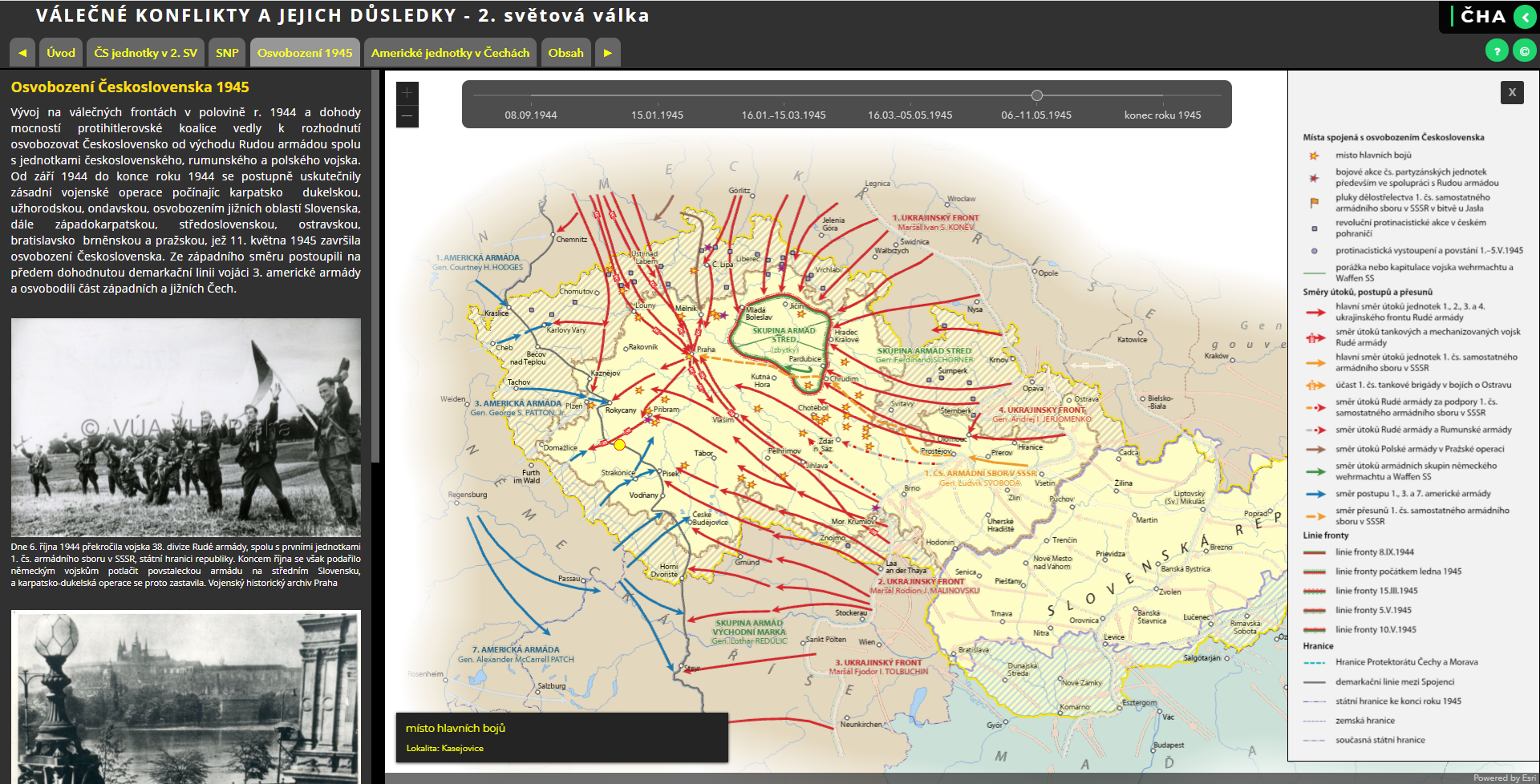
Na tištěné atlasové dílo Český historický atlas. Kapitoly z dějin 20. století, které vyšlo v roce 2019 jako výsledek grantové spolupráce Historického ústavu AV ČR, v.v.i. a Katedry geomatiky Stavební fakulty ČVUT v Praze, navazuje nyní jeho podstatně rozšířená elektronickáverze – interaktivní webový portál Český historický atlas věnovaný českým a československým dějinám v mezinárodních souvislostech, […]
The post Webový portál Český historický atlas (TZ) appeared first on GISportal.cz.
Ještě stále se můžete přihlásit na virtuální 12 hodinový hackathon “Adaptation Idea Sprint”
1.5.2021 8:39 GISportal.cz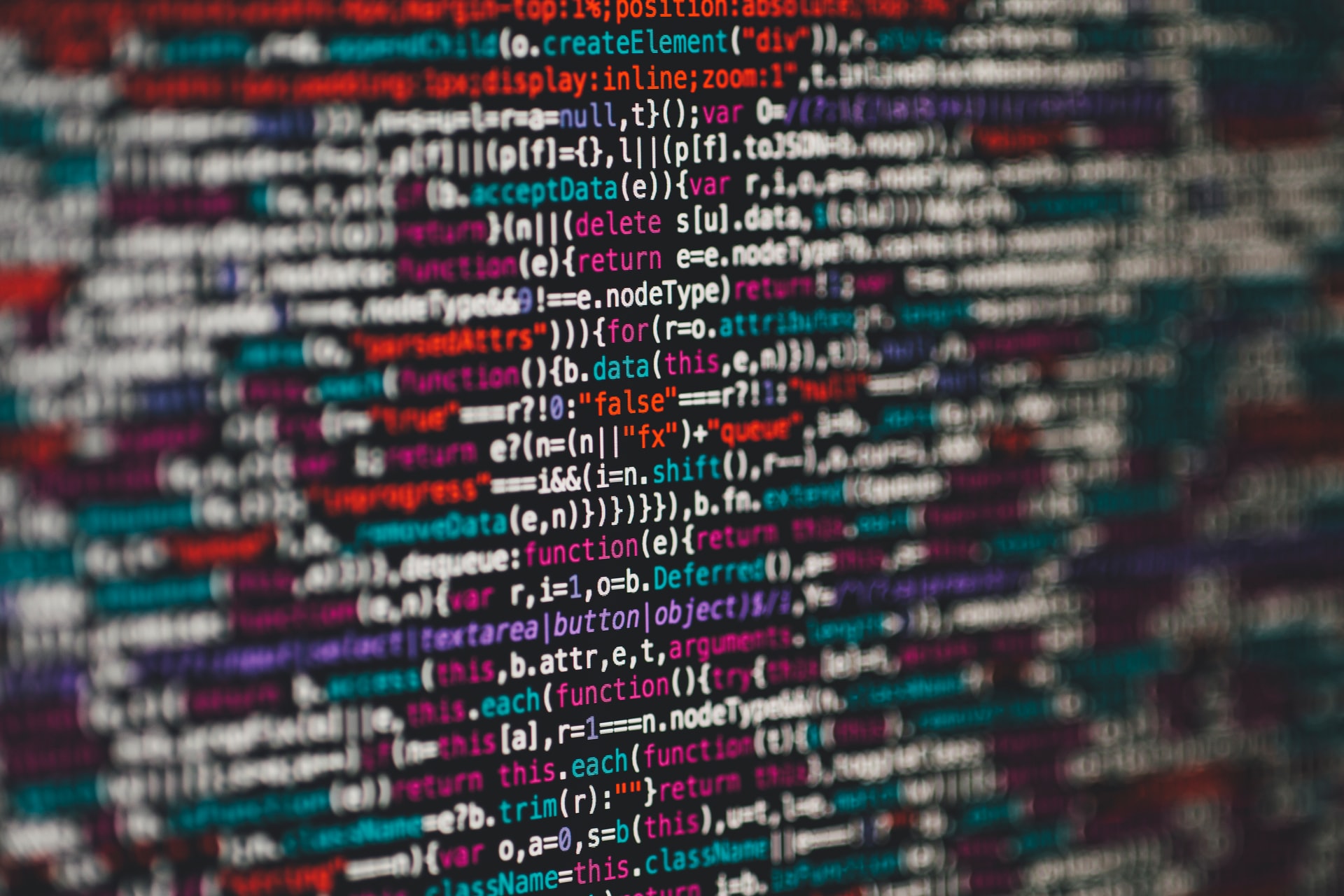
Neváhejte a nepromarněte příležitost realizovat své nápady a získat za to skvělé ceny. Katedra geoinformatiky Přírodovědecké fakulty UP společně s partnery Czechinvest, Czechitas a Statutárním městem Olomouc organizuje virtuální 12hodinový hackathon “Adaptation Idea Sprint“ zaměřený na řešení globálních výzev, jakými jsou v současnosti například klimatická změna nebo pandemie. Na začátku hackathonu sestavite týmy se svými spolužáky, kamarády či kýmkoli […]
The post Ještě stále se můžete přihlásit na virtuální 12 hodinový hackathon “Adaptation Idea Sprint” appeared first on GISportal.cz.
Hexagon selected by Munich for shared mobility solution
1.5.2021 1:07 GISCafe.com Webcasts-Webinars Partnership with Fujitsu to help city track bicycles, e-scooters and ridesharing companies(HUNTSVILLE, Ala., 29 April 2021) — Hexagon’s …
Astro Aerospace announces definitive agreement to acquire Horizon Aircraft
1.5.2021 1:04 GISCafe.com Webcasts-Webinars Horizon Aircraft Electric Vertical Take-Off and Landing ("eVTOL") technology and expertise complements and expands the Astro platform, together …L3Harris Reports Strong First Quarter 2021 Results
30.4.2021 15:55 GISCafe.com Webcasts-Webinars Revenue$4.6 billion, down 1.3% versus prior year, up 1.8% on an organic1 basis
Funded book-to-bill2 of 1.10
Margins and earnings
Net …
Pitney Bowes Announces First Quarter 2021 Financial Results
30.4.2021 15:55 GISCafe.com Webcasts-Webinars STAMFORD, Conn. — (BUSINESS WIRE) — April 30, 2021 —Pitney Bowes Inc. (NYSE: PBI), a global technology company that provides …
Normální provoz Geoportálu ÚAP obnoven
30.4.2021 12:30 Ústecký kraj Oznamujeme, že k dnešnímu dni byly technické problémy odstraněny a výdej a aktualizace dat již probíhají standardním způsobem.Glacier avalanches more common than thought
30.4.2021 11:00 ESA Observing the Earth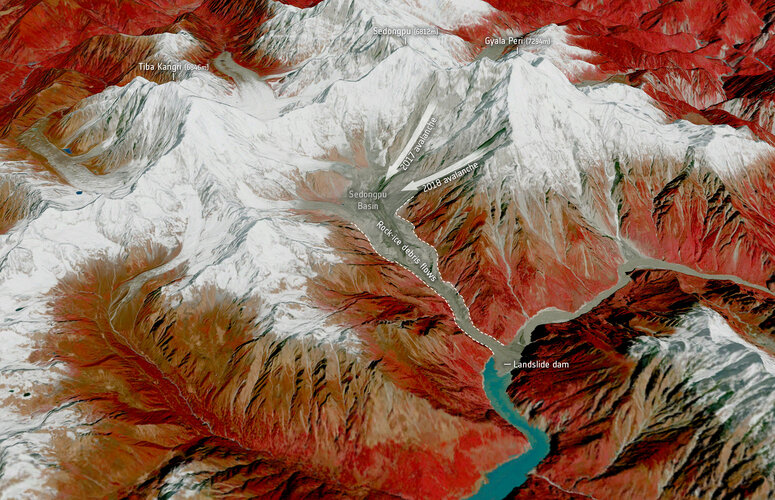
One tends to think of mountain glaciers as slow moving, their gradual passage down a mountainside visible only through a long series of satellite imagery or years of time-lapse photography. However, new research shows that glacier flow can be much more dramatic, ranging from about 10 metres a day to speeds that are more like that of avalanches, with obvious potential dire consequences for those living below.
Earth from Space: Antofagasta, Chile
30.4.2021 10:00 ESA Observing the Earth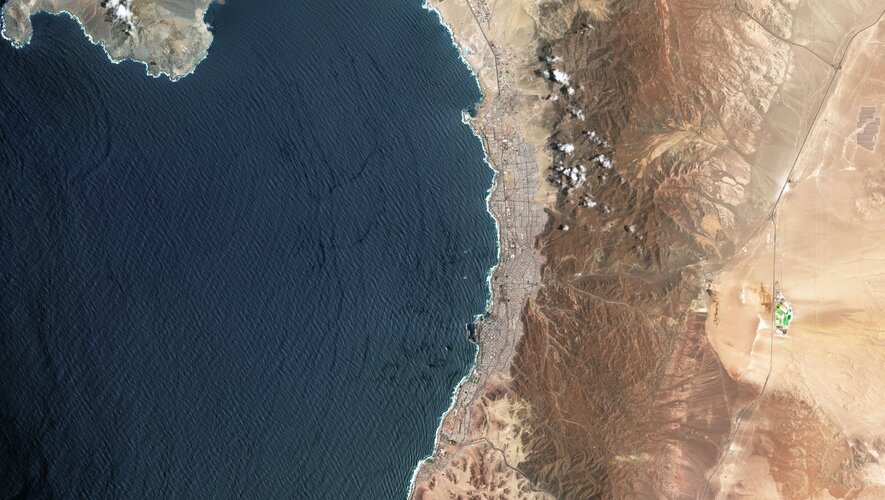
Antofagasta, a port city in northern Chile, is featured in this image captured by the Copernicus Sentinel-2 mission.
Earth from Space: Antofagasta, Chile
30.4.2021 10:00 ESA Observing the Earth
Antofagasta, a port city in northern Chile, is featured in this image captured by the Copernicus Sentinel-2 mission.
20210430_Rada / odborný rada oddělení právních vztahů k nemovitostem
30.4.2021 9:51 ČÚZK /Urady/Katastralni-urady/Katastralni-urady/Katastralni-urad-pro-Stredocesky-kraj/Katastralni-pracoviste/KP-Pribram/O-uradu/Aktuality/20210113_odborny-rada,-reditel-Katastralniho-p-(1)20210430_Rada / odborný rada oddělení právních vztahů k nemovitostem
30.4.2021 9:51 ČÚZK - předpisy a opatření Katastrální úřad pro Středočeský kraj - Katastrální pracoviště Příbram Vyhlášení výběrového řízení: Rada / odborný rada oddělení právních vztahů k nemovitostem V části "Úřední deska", v sekci "Oznámení a jiná úřední sdělení" bylo vystaveno "Oznámení o vyhlášení výběrového řízení na obsazení služebního místa Rada / odborný rada oddělení právních vztahů k nemovitostem"Rada / odborný rada oddělení právních vztahů k nemovitostem
30.4.2021 9:49 ČÚZK - předpisy a opatření Katastrální úřad pro Středočeský kraj - Katastrální pracoviště Příbramvypisuje výběrové řízení na místo Rada / odborný rada oddělení právních vztahů k nemovitostem
Rada / odborný rada oddělení právních vztahů k nemovitostem
Rada / odborný rada oddělení právních vztahů k nemovitostem
30.4.2021 9:49 ČÚZK - volná místa Katastrální úřad pro Středočeský kraj - Katastrální pracoviště Příbram vypisuje výběrové řízení na místo Rada / odborný rada oddělení právních vztahů k nemovitostemDATAMARK Selected to Support NG9-1-1 Preparedness and Completeness Needs in Wood County, Wisconsin
30.4.2021 9:00 GISCafe.com Webcasts-Webinars Firm to Provide Address Comparison and Evaluation ServicesWOOD COUNTY, Wis., April 29, 2021 — (PRNewswire) — DATAMARK, the …
Rand McNally Releases New Edition of its Iconic Road Atlas
30.4.2021 9:00 GISCafe.com Webcasts-Webinars The 98th edition features thousands of updates and a National Park focusCHICAGO, April 26, 2021 — (PRNewswire) — With all indications …
Corporate Vision Magazine Awards AerialSphere as a 2021 Leading Expert in Aerial Imagery and Mapping
30.4.2021 9:00 GISCafe.com Webcasts-Webinars Annual award recognizes performance, achievement and contributionsPHOENIX, April 29, 2021 — (PRNewswire) —
PHOENIX, April 29, 2021 …
GeoMax introduces new X-PAD 365 service platform
30.4.2021 9:00 GISCafe.com Webcasts-Webinars GeoMax connects its entire X-PAD software portfolio, offers integrated applications and services that are accessible anytime, anywhere(Widnau, …Woolpert Selected to Provide Topographic Map of Quarter of Nigeria for MinDiver Project
30.4.2021 9:00 GISCafe.com Webcasts-Webinars This $4.4M contract is through the Ministry of Mines and Steel Development and is funded by the World Bank.JOHANNESBURG, April 28, 2021 — …
Hexagon’s HxDR to host 3DNL, Cyclomedia’s Digital Twin of the Netherlands
30.4.2021 9:00 GISCafe.com Webcasts-Webinars Hexagon provides Cyclomedia with Leica CityMapper-2 to capture nationwide 3D data and the HxDR cloud-based visualisation and collaboration platform …Z časopisu GeoBusiness se stává Zeměměřič & GeoBusiness
30.4.2021 8:07 GISportal.cz
Možná Vám už přišel do schránky, možná si na něj pamatujete, možná je to pro Vás novinka. Mluvíme o časopise GeoBusiness, který s přestávkami vychází od roku 2003 (v letech 2003 až 2006 pod názvem Geoinformace). Od roku 2021 došlo ke spojení s časopisem Zeměměřič, který informuje o nejen geodetických novinkách od roku 1994. Jak […]
The post Z časopisu GeoBusiness se stává Zeměměřič & GeoBusiness appeared first on GISportal.cz.
Z časopisu GeoBusiness se stává Zeměměrič & GeoBusiness
30.4.2021 8:07 GISportal.cz
Možná Vám už přišel do schránky, možná si na něj pamatujete, možná je to pro Vás novinka. Mluvíme o časopise GeoBusiness, který s přestávkami vychází od roku 2003 (v letech 2003 až 2006 pod názvem Geoinformace). Od roku 2021 došlo ke spojení s časopisem Zeměměřič, který informuje o nejen geodetických novinkách od roku 1994. Jak […]
The post Z časopisu GeoBusiness se stává Zeměměrič & GeoBusiness appeared first on GISportal.cz.
rada / odborný rada v oddělení dokumentace Katastrálního pracoviště Jičín
30.4.2021 7:46 ČÚZK - volná místa Katastrální úřad pro Královéhradecký kraj Katastrální pracoviště Jičín vypisuje výběrové řízení na místo rada / odborný rada v oddělení dokumentace Katastrálního pracoviště Jičínrada / odborný rada v oddělení dokumentace Katastrálního pracoviště Jičín
30.4.2021 7:46 ČÚZK /Urady/Katastralni-urady/Katastralni-urady/Katastralni-urad-pro-Kralovehradecky-kraj/Uredni-deska/Oznameni-a-jina-uredni-sdeleni/Volna-mista/DMS/rada-odborny-rada-v-oddeleni-dokumentace-Katastrrada / odborný rada v oddělení dokumentace Katastrálního pracoviště Jičín
30.4.2021 7:46 ČÚZK - volná místa Katastrální úřad pro Královéhradecký kraj vypisuje výběrové řízení na místo rada / odborný rada v oddělení dokumentace Katastrálního pracoviště Jičínrada / odborný rada v oddělení dokumentace Katastrálního pracoviště Jičín
30.4.2021 7:46 ČÚZK - předpisy a opatření Katastrální úřad pro Královéhradecký kraj Katastrální pracoviště Jičínvypisuje výběrové řízení na místo
rada / odborný rada v oddělení dokumentace Katastrálního pracoviště Jičín
rada / odborný rada v oddělení dokumentace Katastrálního pracoviště Jičín
30.4.2021 7:46 ČÚZK - předpisy a opatření Katastrální úřad pro Královéhradecký krajvypisuje výběrové řízení na místo
rada / odborný rada v oddělení dokumentace Katastrálního pracoviště Jičín
Red Cat Holdings Announces Pricing of $16 Million Public Offering and Nasdaq Listing
30.4.2021 2:22 GISCafe.com Webcasts-Webinars HUMACAO, Puerto Rico, April 29, 2021 — (PRNewswire) — Red Cat Holdings, Inc. (Nasdaq: RCAT) ("Red Cat" or the "Company"), a …Bentley Systems Announces Acquisitions of sensemetrics and Vista Data Vision, Leaders Respectively in Software for Infrastructure Instrumentation and Sensor Management
30.4.2021 2:10 GISCafe.com Webcasts-Webinars To Accelerate the “Infrastructure IoT” Opportunity, for Living Digital Twins!EXTON, Pa. — (BUSINESS WIRE) — April 29, 2021 …
Maxar Appoints Chris Johnson to Lead Space Programs
30.4.2021 2:10 GISCafe.com Webcasts-Webinars WESTMINSTER, Colo. — (BUSINESS WIRE) — April 29, 2021 —Maxar Technologies (NYSE:MAXR) (TSX:MAXR), a trusted partner and innovator …
Nabídka práce - Referent/ka odboru analýz a podpory řízení
30.4.2021 0:00 Geografický ústav MUŘeditelka Krajského úřadu Královéhradeckého kraje vyhlašuje výběrové řízení na obsazení pracovního místa Referent/ka odboru analýz a podpory řízení.
Bližší informace naleznete ZDE.
Otevírací doba knihovny geografie se od pondělí 3.5.2021 rozšiřuje!ždý den [Knihovna geografie, byTopic]
30.4.2021 0:00 Katedra aplikované geoinformatiky a kartografie Přf UK Od pondělí 3. května k nám můžete zavítat od pondělí do pátku v čase 9 až 13 hodin. Studovny ale stále zůstávají uzavřené. Těšíme se na Vás!Otevírací doba knihovny geografie se od pondělí 3.5.2021 rozšiřuje! [Knihovna geografie, byTopic]
30.4.2021 0:00 Katedra aplikované geoinformatiky a kartografie Přf UK Od pondělí 3. května k nám můžete zavítat od pondělí do pátku v čase 9 až 13 hodin. Studovny ale stále zůstávají uzavřené. Těšíme se na Vás!Intermap Powers Analytics for Climate Change and Natural Hazards
29.4.2021 21:27 GISCafe.com Webcasts-Webinars DENVER, April 29, 2021 — (PRNewswire) — Intermap Technologies (TSX: IMP) (OTCQX: ITMSF) ("Intermap" or the "Company"), a global leader …Digitalizace ve stavebnictví II. – záznam z online konference
29.4.2021 19:24 BIM NewsSetkání Digitalizace ve stavebnictví II. se uskutečnilo 27. dubna 2021, tentokrát jako online konference. Akce se zúčastnili zástupci české vlády, klíčoví představitelé veřejného sektoru a ředitelé vybraných firem, podílejících se na digitalizaci stavebnictví. Na konferenci byly také představeny rozpracované BIM projekty, především budov, silnic, železnic a vodních toků. Firemní zástupci také diskutovali, proč se nedaří […]
The post Digitalizace ve stavebnictví II. – záznam z online konference appeared first on BIM News.
AGI simplifies membership structure to support growth of UK geocommunity
29.4.2021 15:58 GISCafe.com Webcasts-Webinars 29 April 2021 -- The Association for Geographic Information (AGI) has launched a series of initiatives to support the growth of the UK …
FME Launches 3D Crane Anti-Collision System with Ouster Lidar
29.4.2021 15:57 GISCafe.com Webcasts-Webinars SUZHOU, China, April 29, 2021 — (PRNewswire) — Ouster, Inc. ("Ouster") (NYSE: OUST), a leading provider of high-resolution digital lidar …DarkPulse, Inc. Solidifies Strategic Partnership with Drone Based A.I. Company Remote Intelligence
29.4.2021 15:57 GISCafe.com Webcasts-Webinars NEW YORK, April 29, 2021 (GLOBE NEWSWIRE) -- Dark Pulse, Inc. (OTC Markets: DPLS) (“DarkPulse” and the “Company”), a technology company …Faraday Future Selects Velodyne as Exclusive Lidar Supplier for Flagship FF 91 Luxury Electric Vehicle
29.4.2021 15:57 GISCafe.com Webcasts-Webinars Utilizing Velodyne Sensors, Faraday Future Will Bring Advanced Safety and ADAS to FF 91SAN JOSE, Calif. — (BUSINESS WIRE) — April 29, …
Hexagon Interim Report 1 January - 31 March 2021
29.4.2021 15:57 GISCafe.com Webcasts-Webinars NACKA STRAND, Sweden, April 29, 2021 — (PRNewswire) — First quarter 2021Net sales increased by 10 per cent to 977.9 MEUR (889.9). Using …
odborný rada – ředitel/ka odboru právních vztahů k nemovitostem
29.4.2021 15:35 ČÚZK - volná místa Katastrální úřad pro hlavní město Prahu - Katastrální pracoviště Praha vypisuje výběrové řízení na místo odborný rada – ředitel/ka odboru právních vztahů k nemovitostemodborný rada – ředitel/ka odboru právních vztahů k nemovitostem
29.4.2021 15:35 ČÚZK /Urady/Katastralni-urady/Katastralni-urady/Katastralni-urad-pro-hlavni-mesto-Prahu/Uredni-deska/Oznameni-a-jina-uredni-sdeleni/Volna-mista/DMS/odborny-rada-–-reditel-ka-odboru-pravnich-vztahu-kodborný rada – ředitel/ka odboru právních vztahů k nemovitostem
29.4.2021 15:35 ČÚZK - předpisy a opatření Katastrální úřad pro hlavní město Prahu - Katastrální pracoviště Prahavypisuje výběrové řízení na místo
odborný rada – ředitel/ka odboru právních vztahů k nemovitostem
VR do 30.09 (Chrudim) odborný referent/vrchní referent – návrh zápisu v katastru
29.4.2021 15:34 ČÚZK - předpisy a opatření Katastrální úřad pro hlavní město Prahu - Katastrální pracoviště Praha zveřejnil novou aktualitu: Ředitelka úřadu vyhlašuje výběrové řízení na služební místo:odborný referent/vrchní referent – návrh zápisu v katastru (Chrudim)
VM do 21.06 rada/odborný rada – vedoucí oddělení potvrzování geometrických plánů
29.4.2021 15:34 ČÚZK /Urady/Katastralni-urady/Katastralni-urady/Katastralni-urad-pro-hlavni-mesto-Prahu/O-uradu/Aktuality/odborny-referent-vrchni-referent-–-zapis-do-protokVR do 17.08 rada/odborný rada – vedoucí oddělení metodiky a kontroly
29.4.2021 15:34 ČÚZK - předpisy a opatření Katastrální úřad pro hlavní město Prahu zveřejnil novou aktualitu: Ředitelka úřadu vyhlašuje výběrové řízení na služební místo:rada/odborný rada – vedoucí oddělení metodiky a kontroly
VR do 17.09 rada/odborný rada – právník
29.4.2021 15:34 ČÚZK - předpisy a opatření Katastrální úřad pro hlavní město Prahu - Katastrální pracoviště Praha zveřejnil novou aktualitu: Ředitelka úřadu vyhlašuje výběrové řízení na služební místo:rada/odborný rada – vedoucí oddělení metodiky a kontroly
VR do 30.09 (Chrudim) odborný referent/vrchní referent – návrh zápisu v katastru
29.4.2021 15:34 ČÚZK /Urady/Katastralni-urady/Katastralni-urady/Katastralni-urad-pro-hlavni-mesto-Prahu/O-uradu/Aktuality/odborny-referent-vrchni-referent-–-zapis-do-protokVR do 04.11
29.4.2021 15:34 ČÚZK /Urady/Katastralni-urady/Katastralni-urady/Katastralni-urad-pro-hlavni-mesto-Prahu/O-uradu/Aktuality/odborny-referent-vrchni-referent-–-zapis-do-protokVM do 31.05 vrchní referent/odborný referent – informační a kontrolní pracovník
29.4.2021 15:34 ČÚZK - předpisy a opatření Katastrální úřad pro hlavní město Prahu zveřejnil novou aktualitu: Ředitelka úřadu vyhlašuje výběrové řízení na služební místo:vrchní referent/odborný referent – informační a kontrolní pracovník
VM do 21.06 rada/odborný rada – vedoucí oddělení potvrzování geometrických plánů
29.4.2021 15:34 ČÚZK - předpisy a opatření Katastrální úřad pro hlavní město Prahu - Katastrální pracoviště Praha zveřejnil novou aktualitu: Ředitelka úřadu vyhlašuje výběrové řízení na služební místo:rada/odborný rada – vedoucí oddělení potvrzování geometrických plánů
VM do 13.05 odborný referent/vrchní referent – zápis do protokolu řízení V a Z
29.4.2021 15:34 ČÚZK - předpisy a opatření Katastrální úřad pro hlavní město Prahu - Katastrální pracoviště Praha zveřejnil novou aktualitu: Ředitelka úřadu vyhlašuje výběrové řízení na služební místo:odborný referent/vrchní referent – zápis do protokolu řízení V a Z
odborný referent/vrchní referent – zápis do protokolu řízení V a Z
29.4.2021 15:34 ČÚZK /Urady/Katastralni-urady/Katastralni-urady/Katastralni-urad-pro-hlavni-mesto-Prahu/O-uradu/Aktuality/odborny-referent-vrchni-referent-–-zapis-do-protokVM do 13.05 odborný referent/vrchní referent – zápis do protokolu řízení V a Z
29.4.2021 15:34 ČÚZK /Urady/Katastralni-urady/Katastralni-urady/Katastralni-urad-pro-hlavni-mesto-Prahu/O-uradu/Aktuality/odborny-referent-vrchni-referent-–-zapis-do-protokVM do 26.07 pracovník podatelny
29.4.2021 15:34 ČÚZK /Urady/Katastralni-urady/Katastralni-urady/Katastralni-urad-pro-hlavni-mesto-Prahu/O-uradu/Aktuality/odborny-referent-vrchni-referent-–-zapis-do-protokVR do 17.08 rada/odborný rada – vedoucí oddělení metodiky a kontroly
29.4.2021 15:34 ČÚZK /Urady/Katastralni-urady/Katastralni-urady/Katastralni-urad-pro-hlavni-mesto-Prahu/O-uradu/Aktuality/odborny-referent-vrchni-referent-–-zapis-do-protokVR do 04.11
29.4.2021 15:34 ČÚZK - předpisy a opatření Katastrální úřad pro hlavní město Prahu zveřejnil novou aktualitu: Ředitelka úřadu vyhlašuje výběrové řízení na služební místo:* vrchní referent/odborný referent – informační a kontrolní pracovník
* vrchní referent/rada – kontrola listin určených k záznamu
* rada/odborný rada – právník (PO IV a PO III)
VR do 04.11
29.4.2021 15:34 ČÚZK - předpisy a opatření Katastrální úřad pro hlavní město Prahu zveřejnil novou aktualitu: Ředitelka úřadu vyhlašuje výběrové řízení na služební místo:vrchní referent/odborný referent – informační a kontrolní pracovník
odborný referent/vrchní referent – zápis do protokolu řízení V a Z
29.4.2021 15:34 ČÚZK - předpisy a opatření Katastrální úřad pro hlavní město Prahu - Katastrální pracoviště Praha zveřejnil novou aktualitu: Ředitel úřadu vyhlašuje výběrové řízení na služební místo:odborný referent/vrchní referent – zápis do protokolu řízení V a Z
VM do 31.05 vrchní referent/odborný referent – informační a kontrolní pracovník
29.4.2021 15:34 ČÚZK /Urady/Katastralni-urady/Katastralni-urady/Katastralni-urad-pro-hlavni-mesto-Prahu/O-uradu/Aktuality/odborny-referent-vrchni-referent-–-zapis-do-protokVR do 04.11
29.4.2021 15:34 ČÚZK - předpisy a opatření Katastrální úřad pro hlavní město Prahu zveřejnil novou aktualitu: Ředitelka úřadu vyhlašuje výběrové řízení na služební místo:* vrchní referent/odborný referent – informační a kontrolní pracovník
* vrchní referent/rada – kontrola listin určených k záznamu
VM do 26.07 pracovník podatelny
29.4.2021 15:34 ČÚZK - předpisy a opatření Katastrální úřad pro hlavní město Prahu zveřejnil novou aktualitu: Ředitelka úřadu vyhlašuje výběrové řízení na služební místo:pracovník podatelny
VM do 21.06 rada/odborný rada – vedoucí oddělení potvrzování geometrických plánů
29.4.2021 15:34 ČÚZK - předpisy a opatření Katastrální úřad pro hlavní město Prahu zveřejnil novou aktualitu: Ředitelka úřadu vyhlašuje výběrové řízení na služební místo:referent KN – návrh zápisu, kontrola a zplatnění v PO III.
VR do 17.09 rada/odborný rada – právník
29.4.2021 15:34 ČÚZK /Urady/Katastralni-urady/Katastralni-urady/Katastralni-urad-pro-hlavni-mesto-Prahu/O-uradu/Aktuality/odborny-referent-vrchni-referent-–-zapis-do-protokodborný referent/vrchní referent – zápis do protokolu řízení V a Z
29.4.2021 15:34 ČÚZK - předpisy a opatření Katastrální úřad pro hlavní město Prahu - Katastrální pracoviště Praha zveřejnil novou aktualitu: Ředitelka úřadu vyhlašuje výběrové řízení na služební místo:odborný referent/vrchní referent – zápis do protokolu řízení V a Z
VR do 26.11 odborný referent/vrchní referent – návrh zápisu v katastru
29.4.2021 15:34 ČÚZK /Urady/Katastralni-urady/Katastralni-urady/Katastralni-urad-pro-hlavni-mesto-Prahu/O-uradu/Aktuality/odborny-rada-–-reditel-ka-odboru-pravnich-vztahu-kVR do 11.4 2022
29.4.2021 15:34 ČÚZK - předpisy a opatření Katastrální úřad pro hlavní město Prahu zveřejnil novou aktualitu: Ředitelka úřadu vyhlašuje výběrové řízení na služební místo:* rada/odborný rada – ředitel/ka kanceláře ředitelky
VM do 20.05 odborný rada – ředitel/ka odboru právních vztahů k nemovitostem
29.4.2021 15:34 ČÚZK /Urady/Katastralni-urady/Katastralni-urady/Katastralni-urad-pro-hlavni-mesto-Prahu/O-uradu/Aktuality/odborny-rada-–-reditel-ka-odboru-pravnich-vztahu-kVM do 21.06 odborný rada – ředitel/ka odboru právních vztahů k nemovitostem
29.4.2021 15:34 ČÚZK - předpisy a opatření Katastrální úřad pro hlavní město Prahu - Katastrální pracoviště Praha zveřejnil novou aktualitu: Ředitelka úřadu vyhlašuje výběrové řízení na služební místo:rada/odborný rada – vedoucí samostatného oddělení ostatních řízení
VM do 21.06 rada/odborný rada – vedoucí samostatného oddělení ostatních řízení
29.4.2021 15:34 ČÚZK - předpisy a opatření Katastrální úřad pro hlavní město Prahu - Katastrální pracoviště Praha zveřejnil novou aktualitu: Ředitelka úřadu vyhlašuje výběrové řízení na služební místo:rada/odborný rada – vedoucí samostatného oddělení ostatních řízení
VR do 26.11 odborný referent/vrchní referent – návrh zápisu v katastru
29.4.2021 15:34 ČÚZK - předpisy a opatření Katastrální úřad pro hlavní město Prahu - Katastrální pracoviště Praha zveřejnil novou aktualitu: Ředitelka úřadu vyhlašuje výběrové řízení na služební místo:rada/odborný rada – kontrolor Katastrálního úřadu pro hlavní
rada/odborný rada – vedoucí oddělení potvrzování geometrických plánů
rada/odborný rada – opravy chyb v KN
VR do 11.4 2022
29.4.2021 15:34 ČÚZK /Urady/Katastralni-urady/Katastralni-urady/Katastralni-urad-pro-hlavni-mesto-Prahu/O-uradu/Aktuality/odborny-rada-–-reditel-ka-odboru-pravnich-vztahu-kVR do 4.2 2022
29.4.2021 15:34 ČÚZK - předpisy a opatření Katastrální úřad pro hlavní město Prahu - Katastrální pracoviště Praha zveřejnil novou aktualitu: Ředitelka úřadu vyhlašuje výběrové řízení na služební místo:* referent/odborný referent – poskytování informací KN
VR do 20.10 odborný referent/vrchní referent – návrh zápisu v katastru
29.4.2021 15:34 ČÚZK - předpisy a opatření Katastrální úřad pro hlavní město Prahu - Katastrální pracoviště Praha zveřejnil novou aktualitu: Ředitelka úřadu vyhlašuje výběrové řízení na služební místo:odborný referent/vrchní referent – návrh zápisu v katastru
VM do 20.05 odborný rada – ředitel/ka odboru právních vztahů k nemovitostem
29.4.2021 15:34 ČÚZK - předpisy a opatření Katastrální úřad pro hlavní město Prahu - Katastrální pracoviště Praha zveřejnil novou aktualitu: Ředitelka úřadu vyhlašuje výběrové řízení na služební místo:odborný rada – ředitel/ka odboru právních vztahů k nemovitostem
odborný rada – ředitel/ka odboru právních vztahů k nemovitostem
29.4.2021 15:34 ČÚZK - předpisy a opatření Katastrální úřad pro hlavní město Prahu - Katastrální pracoviště Praha zveřejnil novou aktualitu: Ředitelka úřadu vyhlašuje výběrové řízení na služební místo:odborný rada – ředitel/ka odboru právních vztahů k nemovitostem
VR do 4.2 2022
29.4.2021 15:34 ČÚZK /Urady/Katastralni-urady/Katastralni-urady/Katastralni-urad-pro-hlavni-mesto-Prahu/O-uradu/Aktuality/odborny-rada-–-reditel-ka-odboru-pravnich-vztahu-kodborný rada – ředitel/ka odboru právních vztahů k nemovitostem
29.4.2021 15:34 ČÚZK - předpisy a opatření Katastrální úřad pro hlavní město Prahu - Katastrální pracoviště Praha zveřejnil novou aktualitu: Ředitel úřadu vyhlašuje výběrové řízení na služební místo:odborný rada – ředitel/ka odboru právních vztahů k nemovitostem
VR do 20.10 odborný referent/vrchní referent – návrh zápisu v katastru
29.4.2021 15:34 ČÚZK - předpisy a opatření Katastrální úřad pro hlavní město Prahu - Katastrální pracoviště Praha zveřejnil novou aktualitu: Ředitelka úřadu vyhlašuje výběrové řízení na služební místo:referent KN – poskytování informací KN, nahlížení do KN
VR do 17.08 rada/odborný rada – opravy chyb v KN
29.4.2021 15:34 ČÚZK - předpisy a opatření Katastrální úřad pro hlavní město Prahu - Katastrální pracoviště Praha zveřejnil novou aktualitu: Ředitelka úřadu vyhlašuje výběrové řízení na služební místo:vrchní referent/rada – návrh zápisu, kontrola a zplatnění
VR do 4.2 2022
29.4.2021 15:34 ČÚZK - předpisy a opatření Katastrální úřad pro hlavní město Prahu - Katastrální pracoviště Praha zveřejnil novou aktualitu: Ředitelka úřadu vyhlašuje výběrové řízení na služební místo:* odborný referent/vrchní referent – návrh zápisu v katastru
* rada/odborný rada – kontrolor
* rada/odborný rada – vedoucí právního oddělení VIII.
VR do 26.11 odborný referent/vrchní referent – návrh zápisu v katastru
29.4.2021 15:34 ČÚZK - předpisy a opatření Katastrální úřad pro hlavní město Prahu - Katastrální pracoviště Praha zveřejnil novou aktualitu: Ředitelka úřadu vyhlašuje výběrové řízení na služební místo:* rada/odborný rada – kontrolor
* rada/odborný rada – vedoucí oddělení potvrzování geometrických plánů
* rada/odborný rada – opravy chyb v KN
VR do 17.08 rada/odborný rada – opravy chyb v KN
29.4.2021 15:34 ČÚZK /Urady/Katastralni-urady/Katastralni-urady/Katastralni-urad-pro-hlavni-mesto-Prahu/O-uradu/Aktuality/odborny-rada-–-reditel-ka-odboru-pravnich-vztahu-kVR do 11.4
29.4.2021 15:34 ČÚZK /Urady/Katastralni-urady/Katastralni-urady/Katastralni-urad-pro-hlavni-mesto-Prahu/O-uradu/Aktuality/odborny-rada-–-reditel-ka-odboru-pravnich-vztahu-kVR do 23.12 2021 v počtu 4ks
29.4.2021 15:34 ČÚZK - předpisy a opatření Katastrální úřad pro hlavní město Prahu - Katastrální pracoviště Praha zveřejnil novou aktualitu: Ředitelka úřadu vyhlašuje výběrová řízení na služební místa:* referent KN – návrh zápisu, kontrola a zplatnění do PO VIII
* referent KN – vedení DKM, vedení katastrální mapy, PT 10
* referent KN – obnova a revize katastrálního operátu
VR do 26.11 odborný referent/vrchní referent – návrh zápisu v katastru
29.4.2021 15:34 ČÚZK - předpisy a opatření Katastrální úřad pro hlavní město Prahu - Katastrální pracoviště Praha zveřejnil novou aktualitu: Ředitelka úřadu vyhlašuje výběrové řízení na služební místo:rada/odborný rada – kontrolor Katastrálního úřadu pro hlavní
rada/odborný rada – vedoucí oddělení potvrzování geometrických plánů
rada/odborný rada – opravy chyb v KN
VM do 20.07 rada/odborný rada – vedoucí oddělení metodiky a kontroly
29.4.2021 15:34 ČÚZK - předpisy a opatření Katastrální úřad pro hlavní město Prahu - Katastrální pracoviště Praha zveřejnil novou aktualitu: Ředitelka úřadu vyhlašuje výběrové řízení na služební místo:rada/odborný rada – vedoucí oddělení metodiky a kontroly
VR do 20.10 odborný referent/vrchní referent – návrh zápisu v katastru
29.4.2021 15:34 ČÚZK /Urady/Katastralni-urady/Katastralni-urady/Katastralni-urad-pro-hlavni-mesto-Prahu/O-uradu/Aktuality/odborny-rada-–-reditel-ka-odboru-pravnich-vztahu-kVR do 23.12 2021 v počtu 4ks
29.4.2021 15:34 ČÚZK - předpisy a opatření Katastrální úřad pro hlavní město Prahu - Katastrální pracoviště Praha zveřejnil novou aktualitu: Ředitelka úřadu vyhlašuje výběrová řízení na služební místa:* referent KN – návrh zápisu, kontrola a zplatnění do PO VIII
* referent KN – vedení DKM, vedení katastrální mapy, PT 10
* referent KN – potvrzování geometrických plánů
* referent KN – obnova a revize katastrálního operátu
VR do 26.11 odborný referent/vrchní referent – návrh zápisu v katastru
29.4.2021 15:34 ČÚZK - předpisy a opatření Katastrální úřad pro hlavní město Prahu - Katastrální pracoviště Praha zveřejnil novou aktualitu: Ředitelka úřadu vyhlašuje výběrové řízení na služební místo:* rada/odborný rada – kontrolor
* rada/odborný rada – vedoucí oddělení potvrzování GP
* rada/odborný rada – opravy chyb
VM do 21.06 odborný rada – ředitel/ka odboru právních vztahů k nemovitostem
29.4.2021 15:34 ČÚZK /Urady/Katastralni-urady/Katastralni-urady/Katastralni-urad-pro-hlavni-mesto-Prahu/O-uradu/Aktuality/odborny-rada-–-reditel-ka-odboru-pravnich-vztahu-kodborný rada – ředitel/ka odboru právních vztahů k nemovitostem
29.4.2021 15:34 ČÚZK /Urady/Katastralni-urady/Katastralni-urady/Katastralni-urad-pro-hlavni-mesto-Prahu/O-uradu/Aktuality/odborny-rada-–-reditel-ka-odboru-pravnich-vztahu-kVR do 11.4
29.4.2021 15:34 ČÚZK - předpisy a opatření Katastrální úřad pro hlavní město Prahu zveřejnil novou aktualitu: Ředitelka úřadu vyhlašuje výběrové řízení na služební místo:* rada/odborný rada – ředitel/ka kanceláře ředitelky
VR do 23.12 2021 v počtu 4ks
29.4.2021 15:34 ČÚZK - předpisy a opatření Katastrální úřad pro hlavní město Prahu - Katastrální pracoviště Praha zveřejnil novou aktualitu: Ředitelka úřadu vyhlašuje výběrové řízení na služební místo:* referent KN – pracovník výpravny
VR do 17.08 rada/odborný rada – opravy chyb v KN
29.4.2021 15:34 ČÚZK - předpisy a opatření Katastrální úřad pro hlavní město Prahu - Katastrální pracoviště Praha zveřejnil novou aktualitu: Ředitelka úřadu vyhlašuje výběrové řízení na služební místo:rada/odborný rada – opravy chyb v KN



